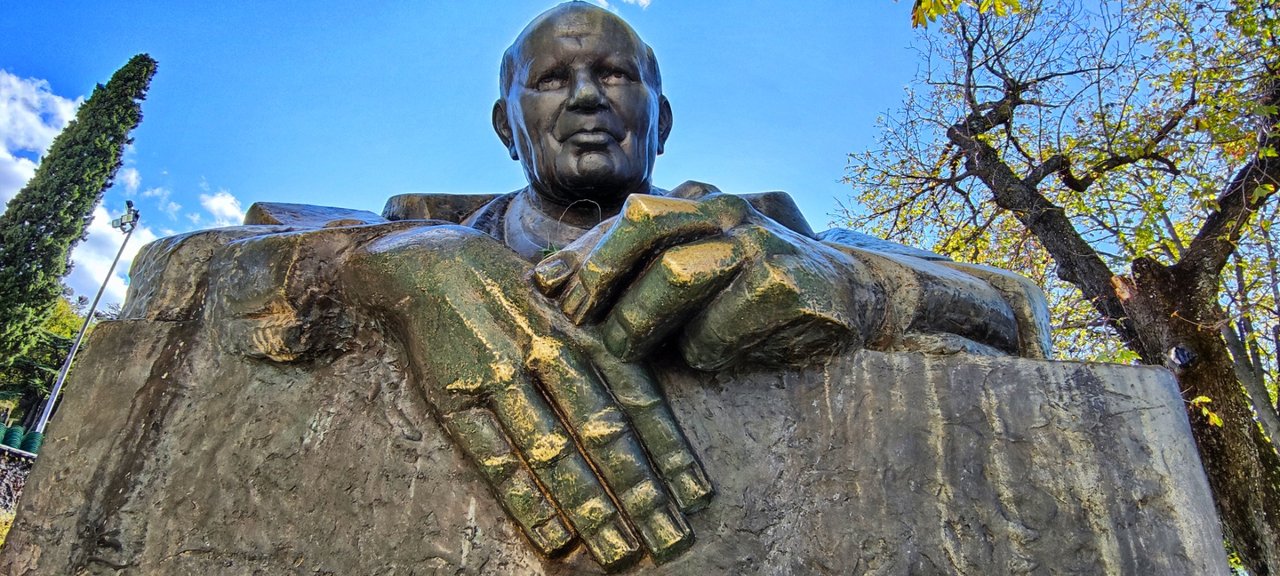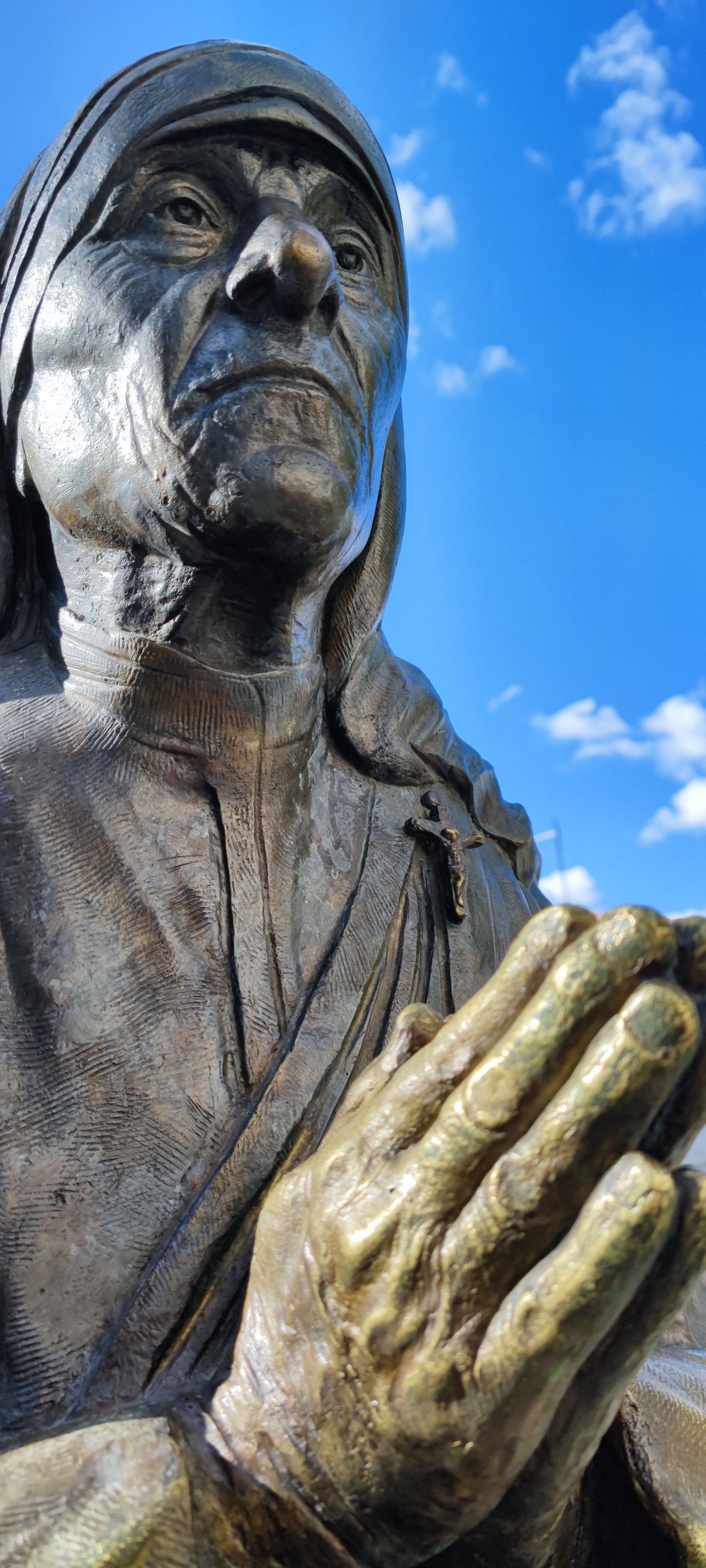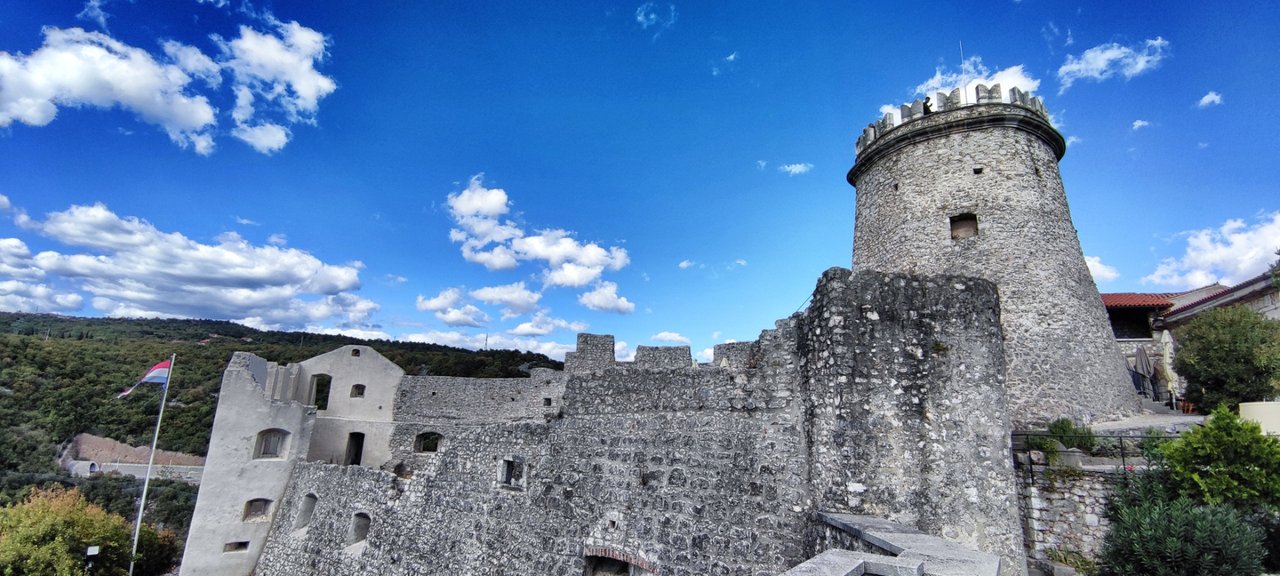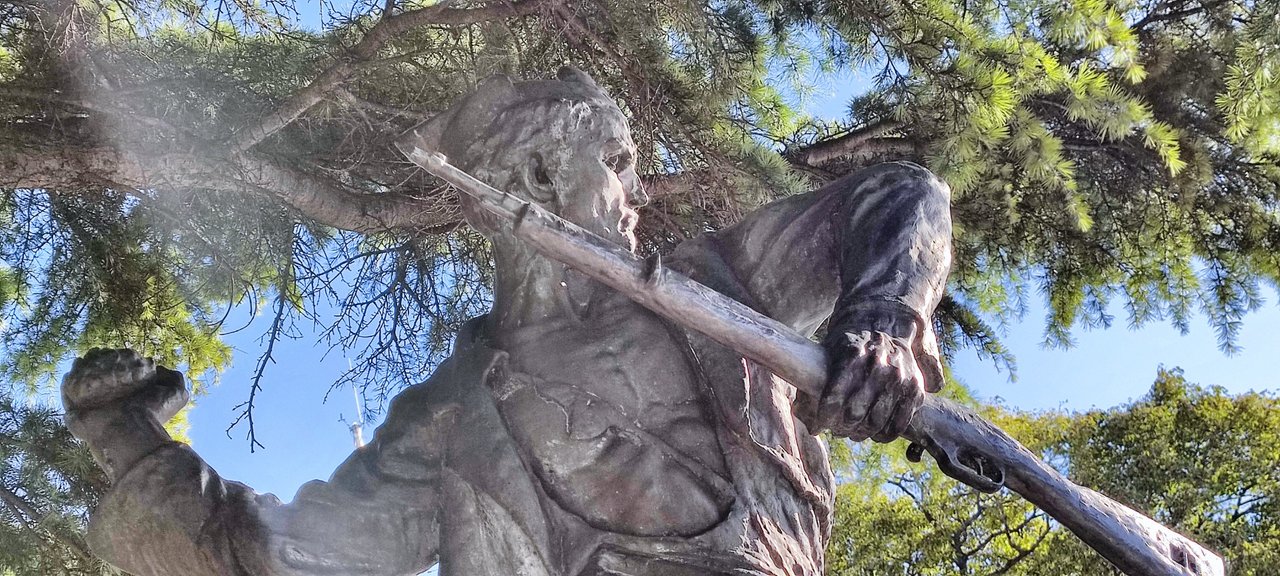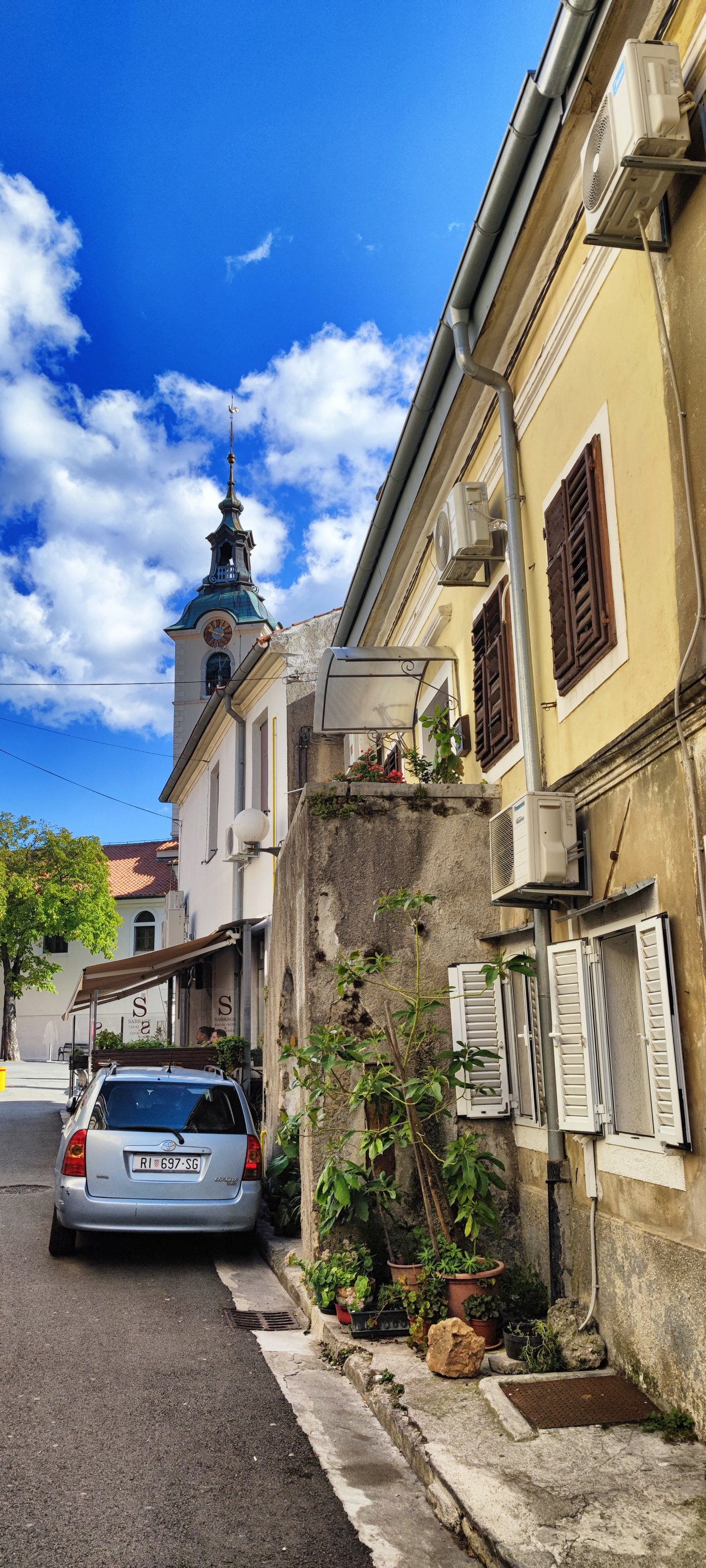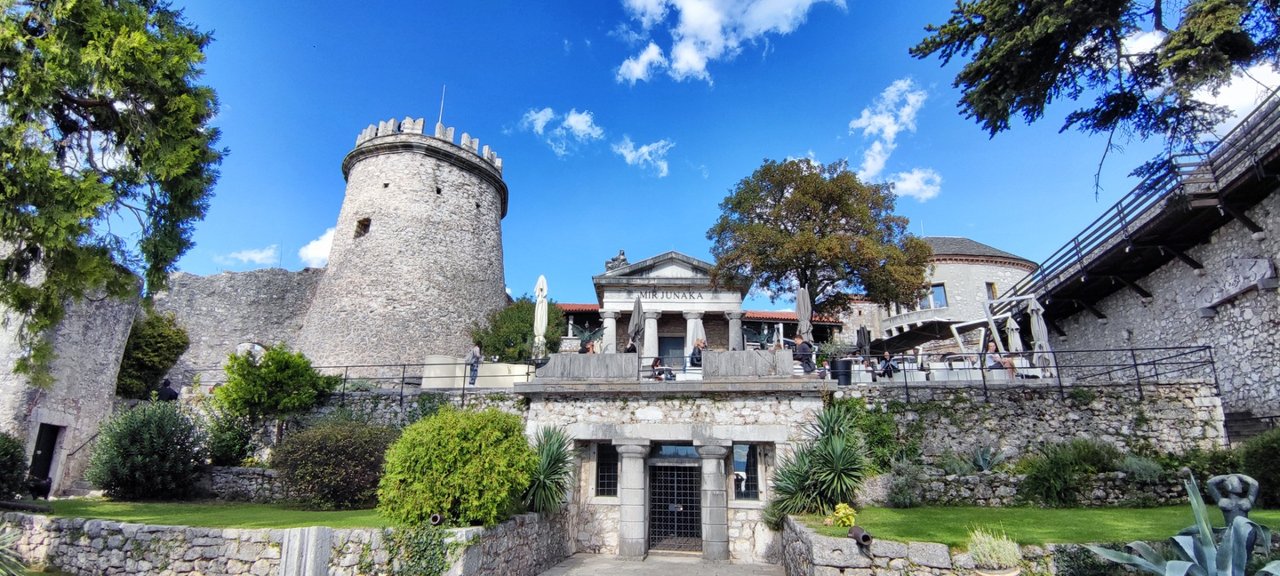It is not too far to go at this place from one century to the other. It takes an hour on foot from the World War II bunkers of the Katarina B underground complex to Trsat Castle, a fortress whose construction was started by the Romans in the 4th century. At that time, the Imperium Romanum chose a 138 m high hill above Rijeka to build here a part of their defense system Claustra Alpium Iuliarum. It was an important construction, because the Romans controlled the way from the inland towards the sea, but offshore are pirates prowled, occasionally landing and plundering.
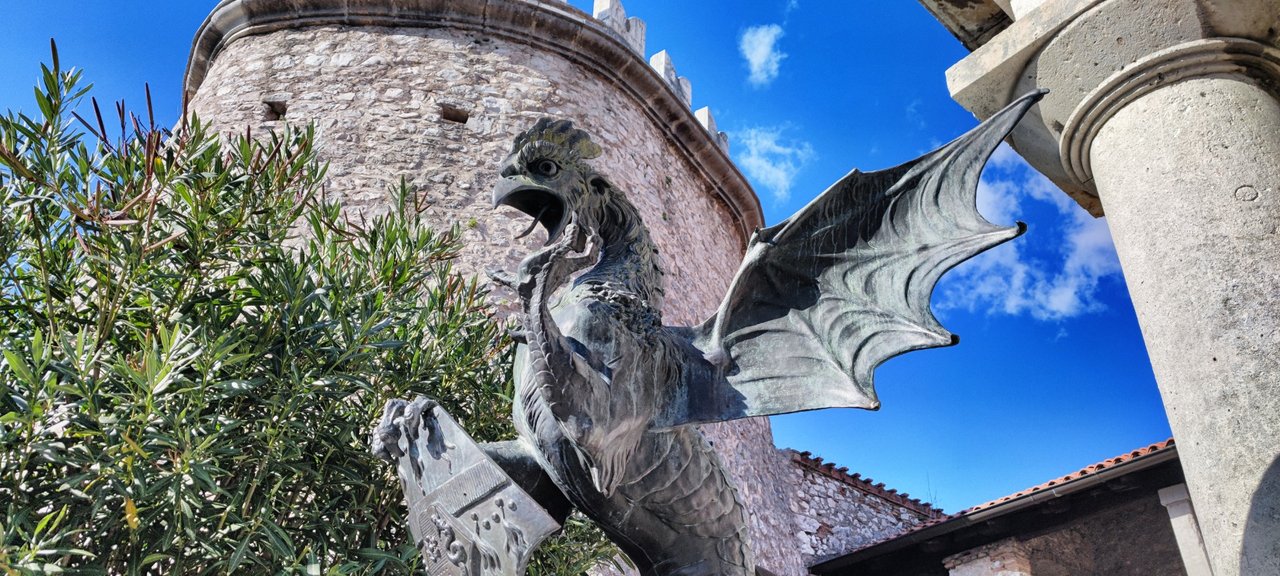 Dragons at the castle.
Dragons at the castle.
Fortress and monastery
Originally, the castle, which today has a cafe and a stage for cultural events, was therefore a military fortress to defend the nearby settlements. But as often as the region changed its lords, so quickly the towering structure got new tasks. Sometimes a fortress, sometimes a monastery, sometimes a church, sometimes a library. After the collapse of the Western Roman Empire, the famous Vinodolski Code is said to have been written here in 1288, in which the fortress is mentioned as a parish seat.
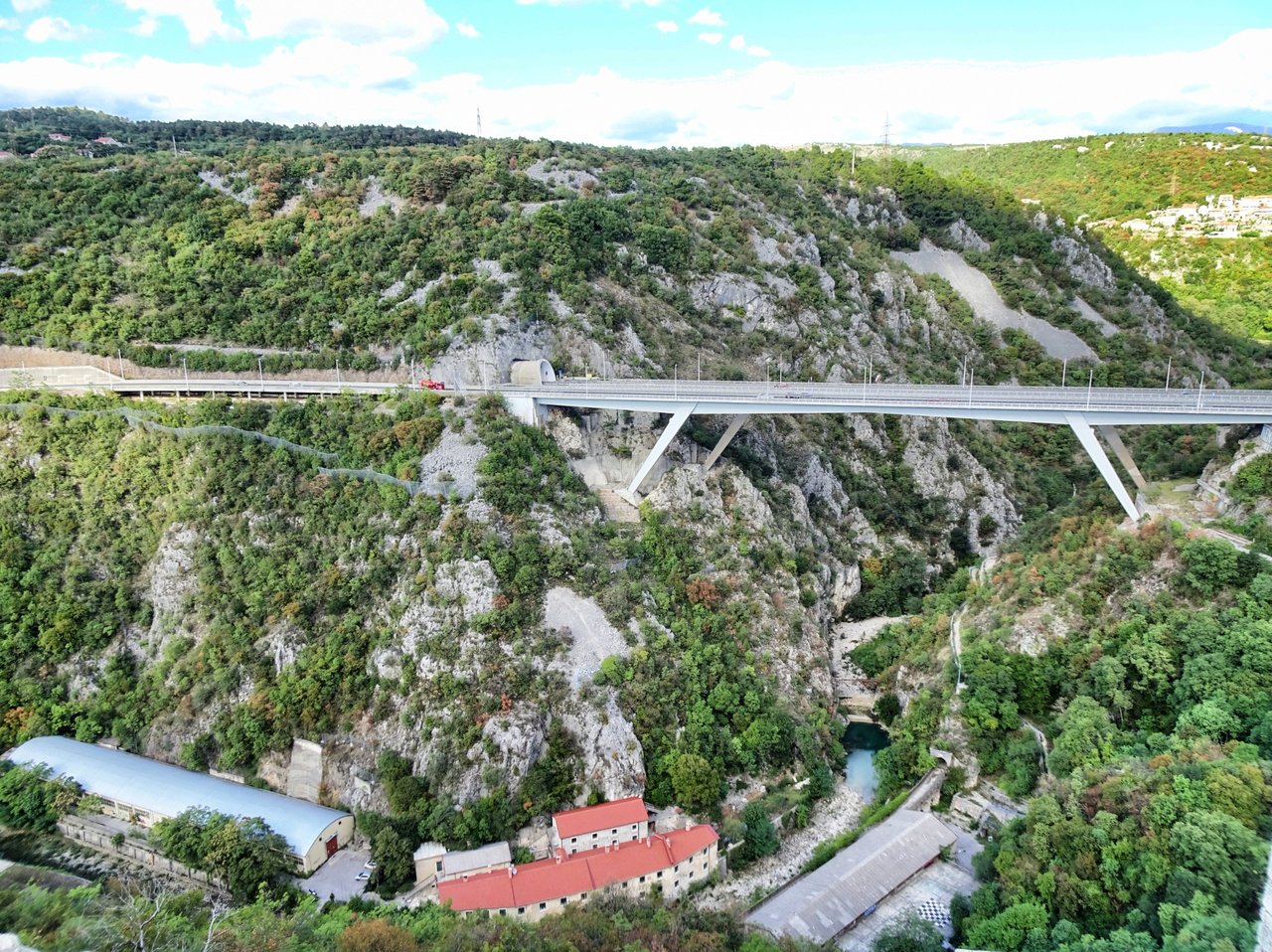 The view to the valley.
The view to the valley.
An air of sanctity still hangs over the place under the clouds, where for more than 700 years Our Lady has been venerated in the form of a painting said to have come from Nazareth. In 1294, the image is said to have been carried on by angels to Loretto near Ancona, where the "Casa Santa" in the basilica remains to this day. Here, where it was before, one worships the wall instead.
Every stone has a story
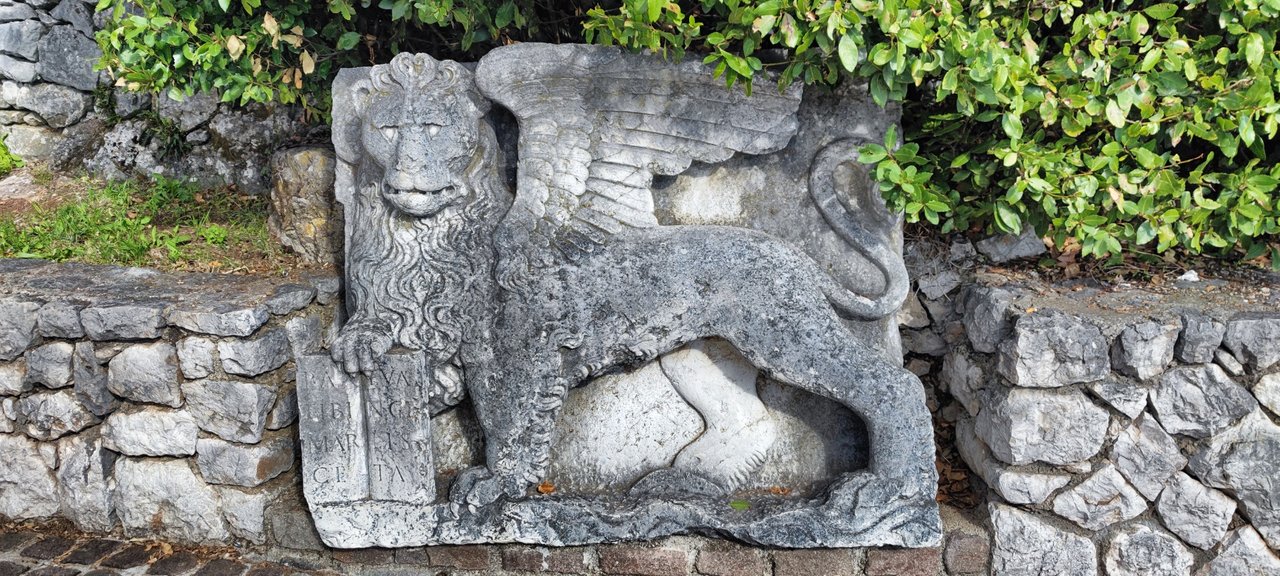 A lion, maybe from the Venetians.
A lion, maybe from the Venetians.
Every stone breathes history, every board and every tree. Tarsatica, the original name of the ancient Roman settlement, from which developed the settlement of Trsat, is today forms part of Rijeka. Trsat was the first settlement in this area. The area later came into the possession of Prince Frankopan, the landlord of the island of Krk, which he probably hoped to see from the steep hill above the Rječina gorge.
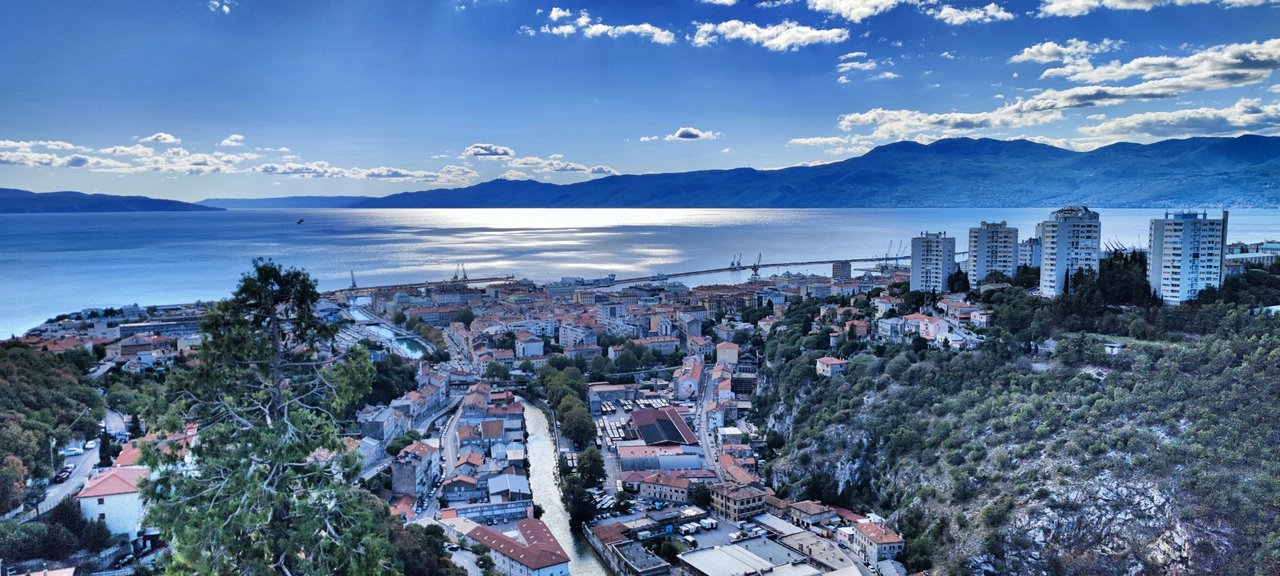 The view to the mediterrean sea.
The view to the mediterrean sea.
We cannot discover the island today. Since Martin Frankopan Jr. had the Franciscan monastery with the church of the Blessed Virgin Mary built here, these stones have seen so much. It is true that only fragments of Frankopan's church remain today, because in 1509 the city of Rijeka was burned to the ground by the Venetians.
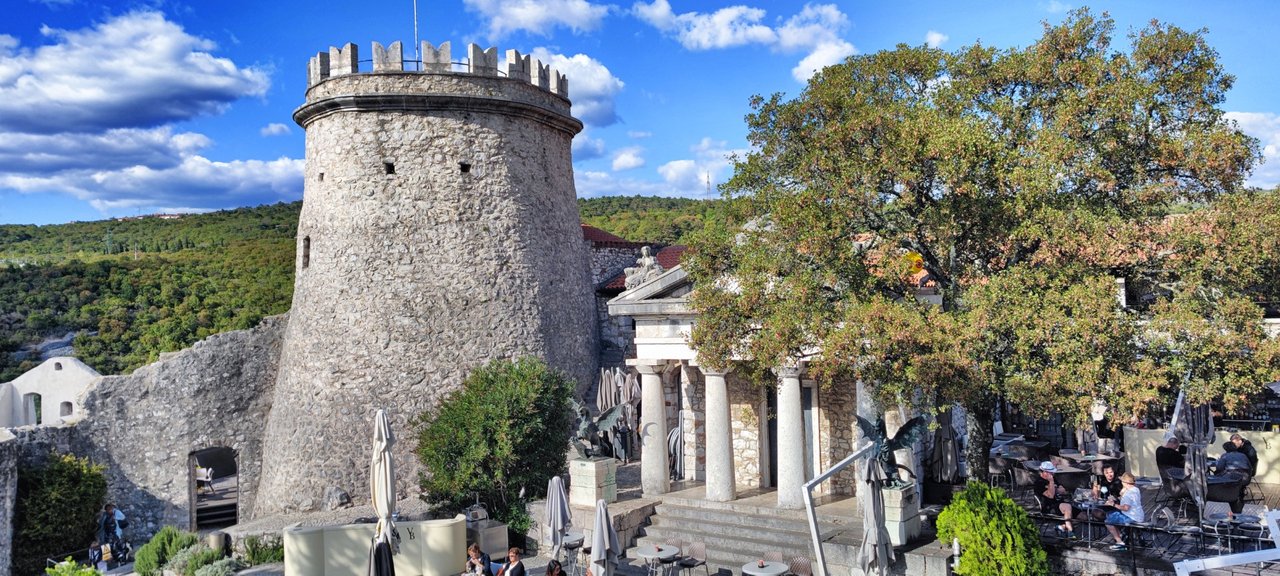 The tower is old, the theater looks like greek.
The tower is old, the theater looks like greek.
Virgin Mary under fire
However, later a larger church was built on the same site and there lies to this day the fragment of a Virgin Mary illustration that survived the fire. This image of the Madonna has been venerated by the enthusiastic Catholics in Croatia since 1367. Pope Urban V is said to have once donated the painting to pilgrims and, according to legend, it is even part of a Crusader treasure that knights hid here after their defeat in the Holy Land.
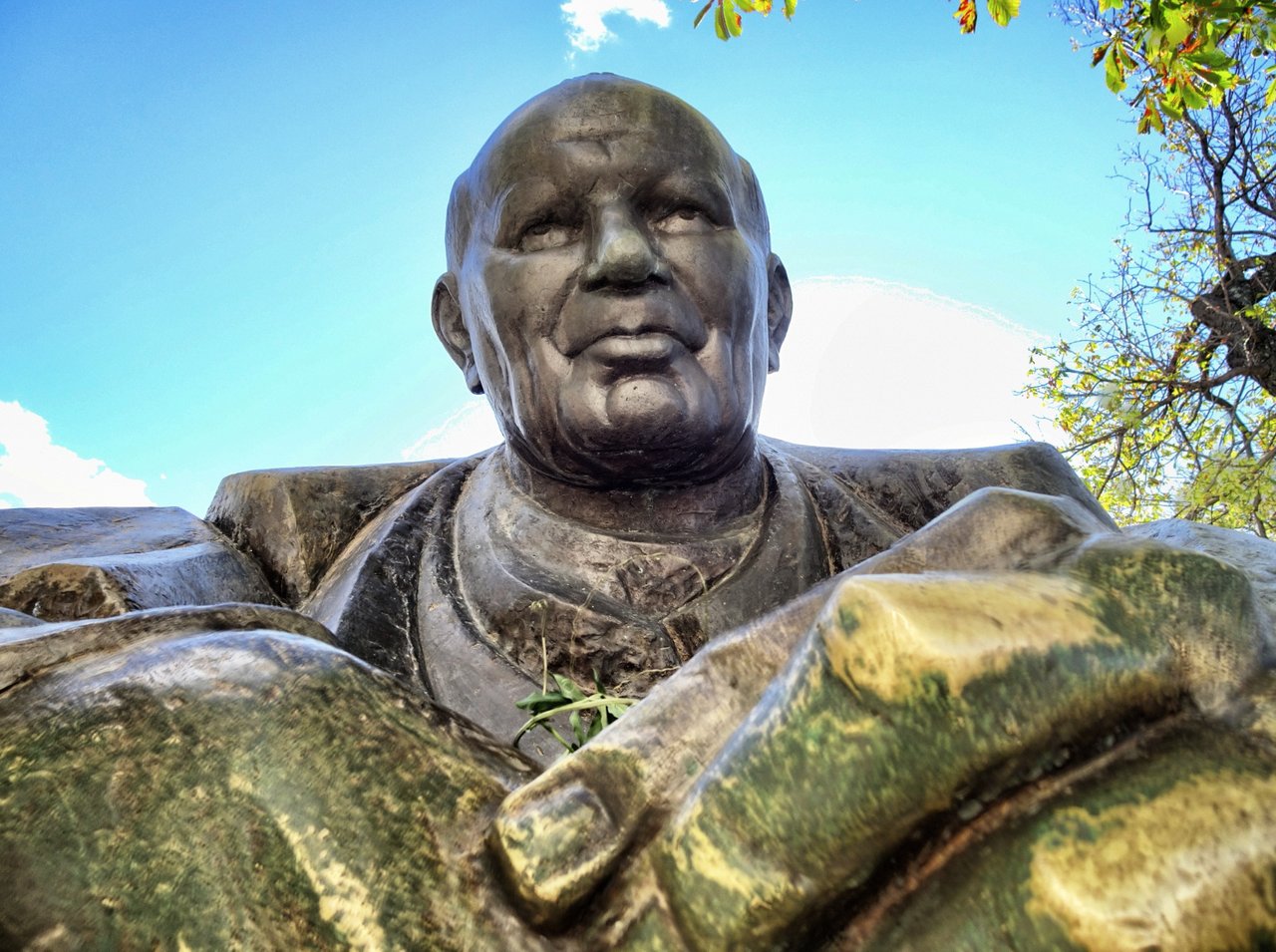 Pope Johannes Paul II. as a pilgrim.
Pope Johannes Paul II. as a pilgrim.
What is true, what is a fairy tale? Since the beginning of the 16th century Venetians and Turks conquered the fort virtually over and over again from each other, nothing was certain and nobody. It was only towards the end of the century that the then governor of Rijeka had the castle fortified and modernized. But after an earthquake in 1750, the fortress fell into disrepair and was abandoned, unable to withstand an attack by the long-modernized armies of the time.
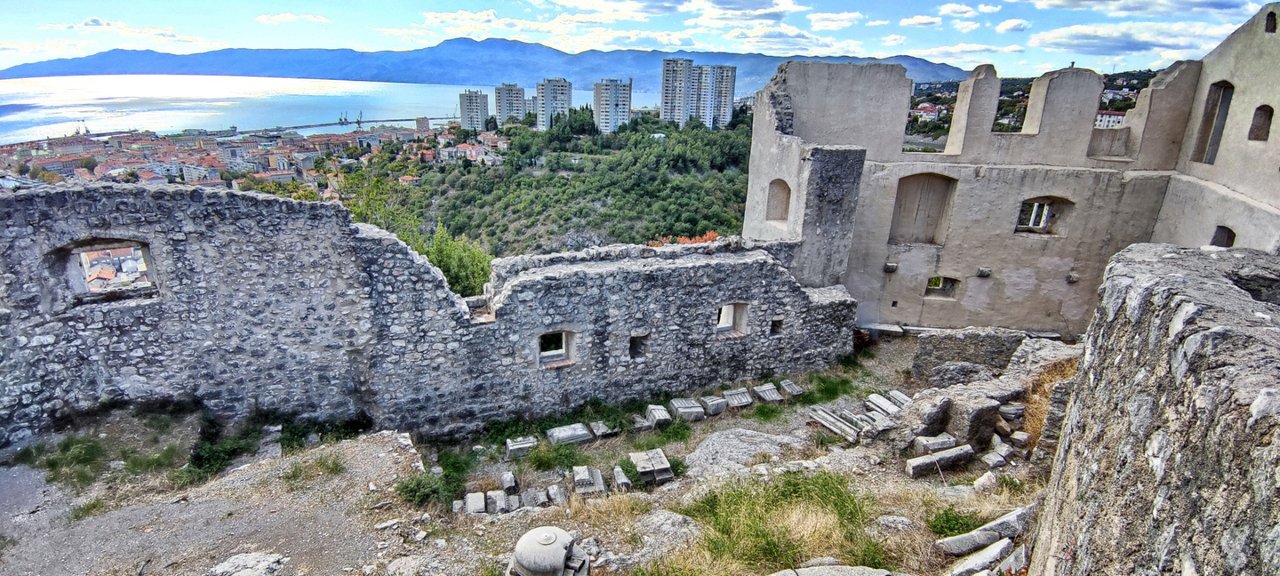 The ruins of the older parts of the castle.
The ruins of the older parts of the castle.
The romantic idyll
In 1826, the Austrian Field Marshal Count Nugent acquired the Trsat Castle and rebuilt it into a romantic idyll. From the ruins and rubble of the decayed walls, lookout towers, terraces, ramparts and buildings were built. All in the style of the then modern taste of historicism. Ivy and other plants surrounded the castle built of old stone, which Nugent had decorated with dragon sculptures and wing-beating angels. A fairytale ambience indeed!
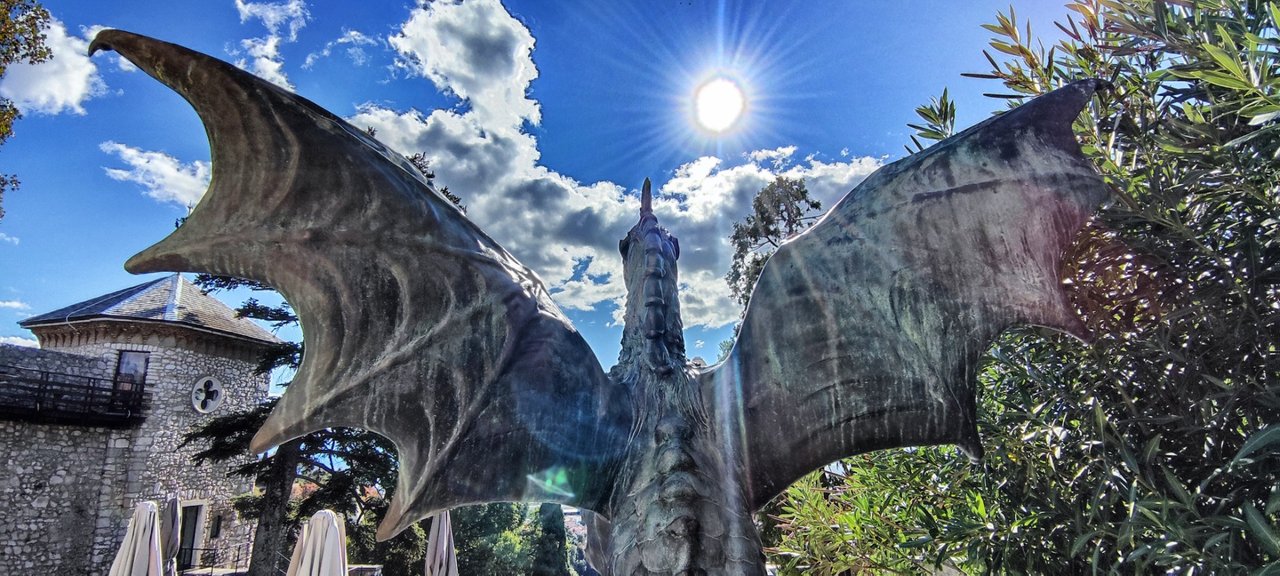 Fly like a dragon.
Fly like a dragon.
The inner courtyard of the castle is now a restaurant. It invites you to linger over a delicious glass of wine, ice cream and tasty food. Many tourists visit the place during the summer months to admire Count Nugent's museum opened in 1843. But the "Mala Galerija" is closed on the day of our visit. So we walk down, in the footsteps of the former Pope Johannes Paul II, who had made a pilgrimage here in 2003 to pay his respects to the very special place.
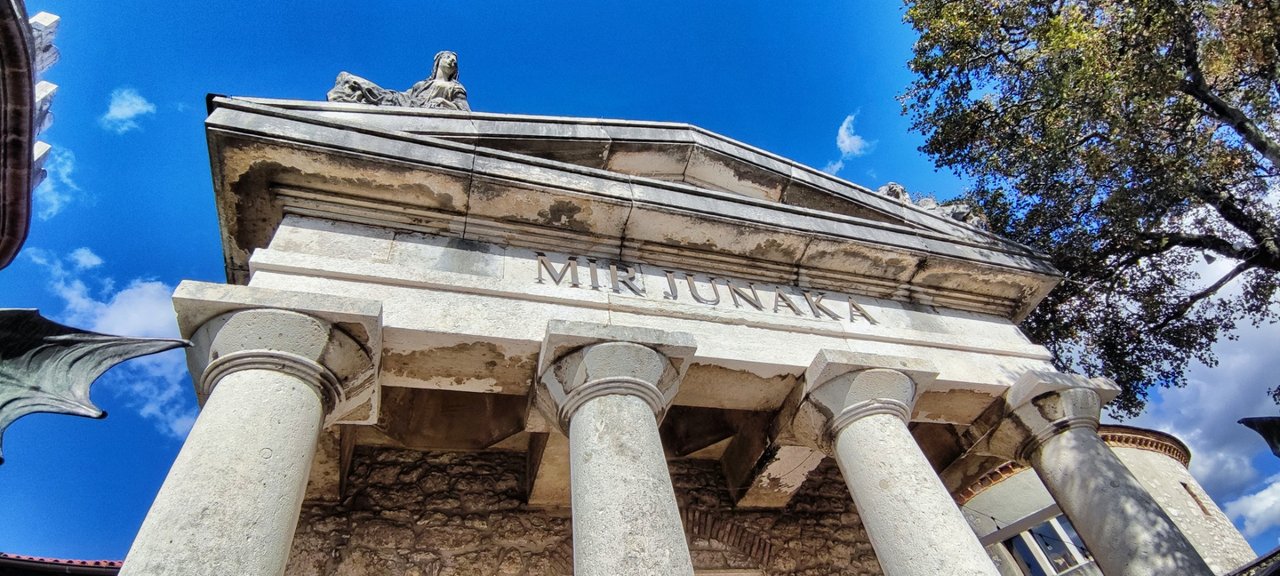 Greek, or isn't it?
Greek, or isn't it?
The pilgrim of Trsat
A statue called "The Pilgrim of Trsat" commemorates to this day the holy visit, during which the head of the Catholic Church prayed in the church of Our Lady of Trsat to show his gratitude to the Franciscan friars for their perseverance and devotion over 550 long years.
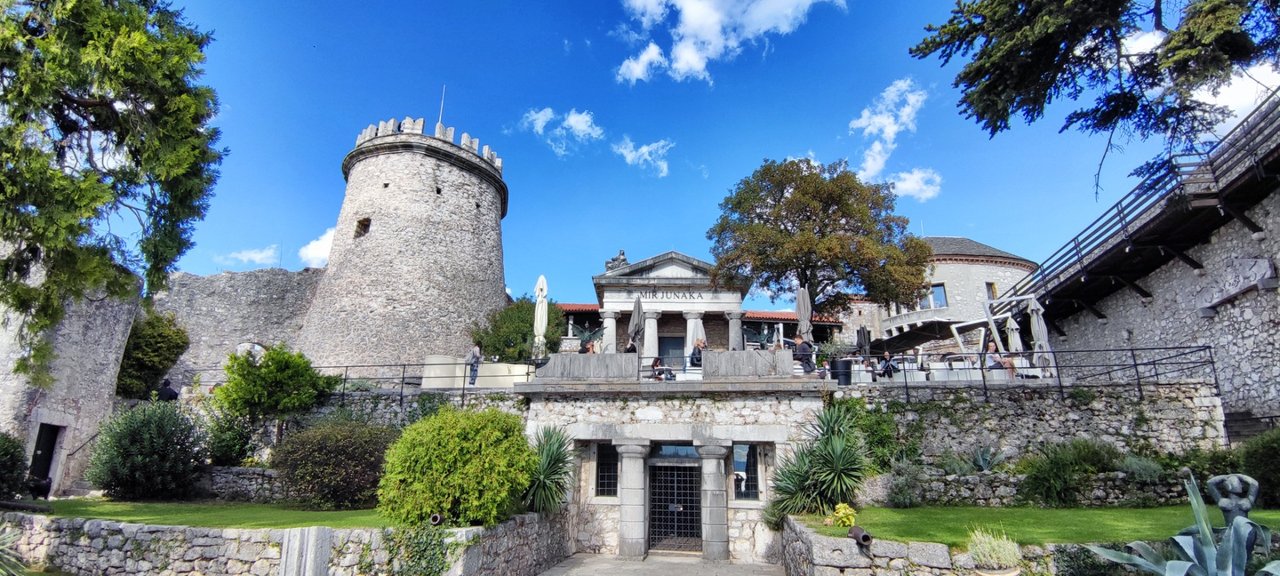 The complete castle of Trsat.
The complete castle of Trsat.
For the faithful Croats, this gesture is still considered one of the most beautiful chapters in the history of this shrine and serves as a confirmation of the importance of the seven centuries long history of Trsat.
Thank you for reading and if you like my work please follow me on Hive, Travelfeed or Steem or visit my homepage koenau.de
A few more pictures:
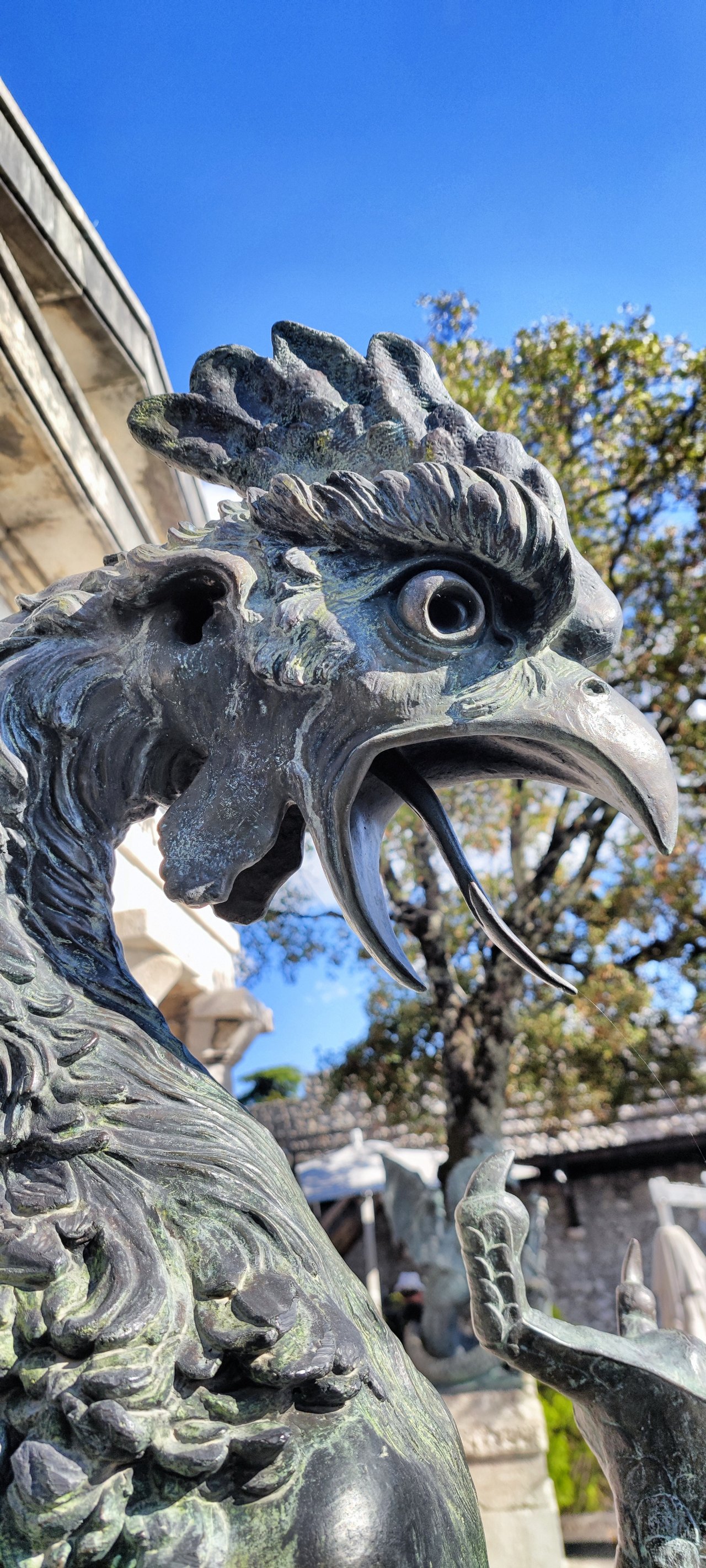 It's magic.
It's magic.




